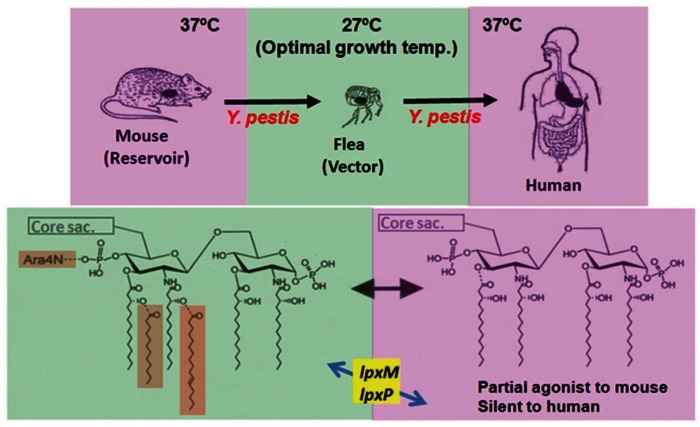Figure 3.
Infection cycle of Y. pestis and temperature-dependent alteration of its lipid A structures. Y. pestis, a causative agent of plague, grows in mice at 37°C by possessing a tetra-acylated type as its major lipid A species. This lipid A species acts as a partial agonist to mouse cells, and Y. pestis is recognized by the mouse innate immune system to some extent but not enough to eliminate it completely. As a result, moderate amounts of the bacteria can survive in mice for a prolonged period, and infected mice serve as a reservoir of Y. pestis. Through flea bites, this bacterium moves into fleas and grows actively at 27°C, its optimal growth temperature. At this temperature, expression of the late acyltransferase genes (lpxM and lpxP) is upregulated, and a hexa-acylated type becomes predominant among its lipid A species. Then, the bacterium moves into a human body through the bite of an infected flea and grows at 37°C. At this temperature, the expression of the late acyltransferase genes is downregulated, and the major lipid A species shift to the tetra-acylated type. Y. pestis containing such lipid A species is not sensed (is silent) by the human TLR4-mediated innate immune system, and the bacteria can grow freely and induce severe diseases.

